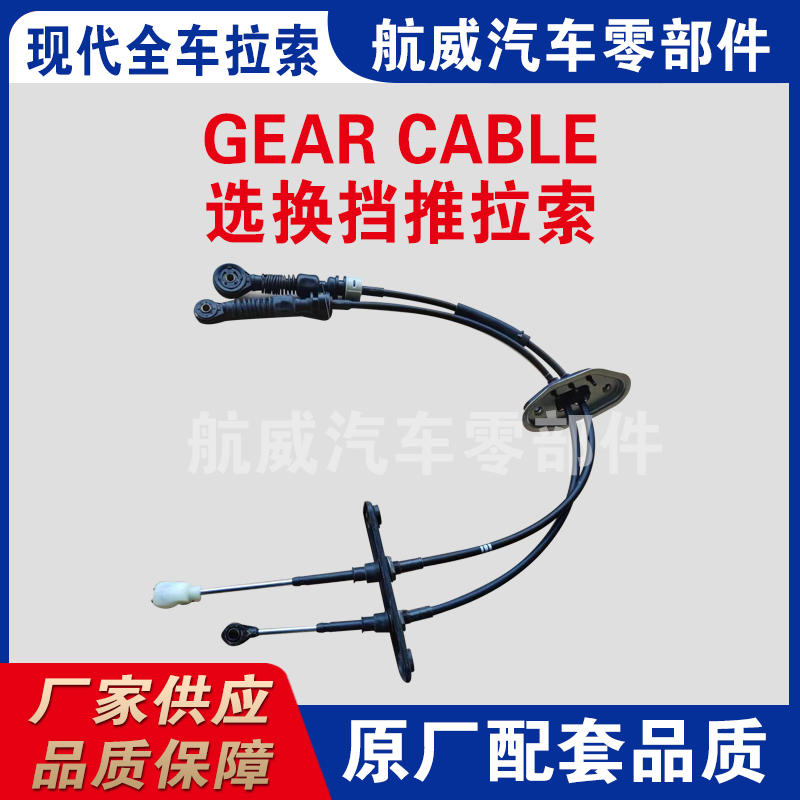throttle wire
Understanding Throttle Wires in Automotive Applications
Throttle wires play a crucial role in the functionality of various automotive systems, particularly in the operation of internal combustion engines. As a key component in the throttle control system, these wires facilitate the communication between the accelerator pedal and the throttle body. This article delves into the purpose, types, installation, and maintenance of throttle wires, providing a comprehensive understanding of their importance in modern vehicles.
The Role of Throttle Wires
Throttle wires are primarily responsible for transmitting the driver's input from the accelerator pedal to the throttle body. When a driver presses the accelerator pedal, the throttle wire pulls on the throttle linkage, opening the throttle plate and allowing more air into the engine. This increase in airflow directly correlates with an increase in fuel delivery, ultimately resulting in greater engine power and acceleration.
In older vehicles, throttle wires were predominantly mechanical
. However, with advances in technology and the introduction of electronic throttle control (ETC) systems, throttle wires can also refer to electronic signals transmitted from sensors that relay the pedal position to the engine control unit (ECU). In ETC systems, the physical wire is replaced by sensors and actuators, providing improved accuracy and response time.Types of Throttle Wires
Throttle wires can be categorized into two main types mechanical throttle cables and electronic throttle control systems.
1. Mechanical Throttle Cables These cables consist of a steel wire encased in plastic or rubber tubing, connecting the accelerator pedal to the throttle body. Mechanical cables are simpler in design and have been widely used in many vehicles until the late 1990s. The direct connection allows for immediate feedback; however, they are prone to wear and may require periodic adjustments.
throttle wire

2. Electronic Throttle Control Systems In modern vehicles, many manufacturers have transitioned to electronic systems. These systems utilize a series of sensors and actuators instead of traditional cables. The accelerator pedal position is monitored by sensors, which send signals to the ECU that adjusts the throttle opening accordingly. This system not only enhances performance and fuel efficiency but also provides advanced features such as cruise control, stability control, and traction control.
Installation and Maintenance
Installing a throttle wire, whether mechanical or part of an electronic system, requires attention to detail and an understanding of the specific vehicle model. For mechanical throttle cables, it is essential to ensure that the cable is routed correctly, avoiding sharp bends that could restrict movement. Proper lubrication is also necessary to ensure smooth operation and prevent wear.
For electronic throttle control systems, installation is more complex. It typically involves connecting various sensors and actuators to the ECU. Calibration is crucial to ensure that the system accurately reflects the driver's input. If a problem arises, such as poor acceleration or erratic throttle response, it may be indicative of faulty sensors, wiring issues, or ECU malfunctions.
Regular maintenance is vital for both types of throttle systems. For mechanical cables, periodic inspection for fraying or corrosion can prevent sudden failures. In the case of electronic systems, regular diagnostics using automotive scan tools can help identify potential issues before they affect performance.
Conclusion
Throttle wires, whether mechanical or electronic, are fundamental components that significantly impact a vehicle's performance. Understanding their function, types, installation procedures, and maintenance practices is essential for both vehicle owners and automotive professionals. As technology continues to evolve, the reliance on electronic throttle systems is expected to grow, making it more important than ever to stay informed about these critical automotive elements. By ensuring that throttle wires are properly maintained, drivers can enjoy improved responsiveness and efficiency, leading to a safer and more enjoyable driving experience.
-
Workings of Clutch Pipe and Hose SystemsNewsJun.04,2025
-
The Inner Workings of Hand Brake Cable SystemsNewsJun.04,2025
-
The Secrets of Throttle and Accelerator CablesNewsJun.04,2025
-
The Hidden Lifeline of Your Transmission Gear Shift CablesNewsJun.04,2025
-
Demystifying Gear Cables and Shift LinkagesNewsJun.04,2025
-
Decoding Clutch Line Systems A Comprehensive GuideNewsJun.04,2025
